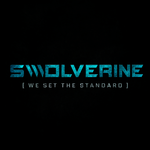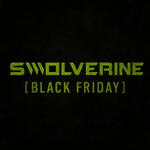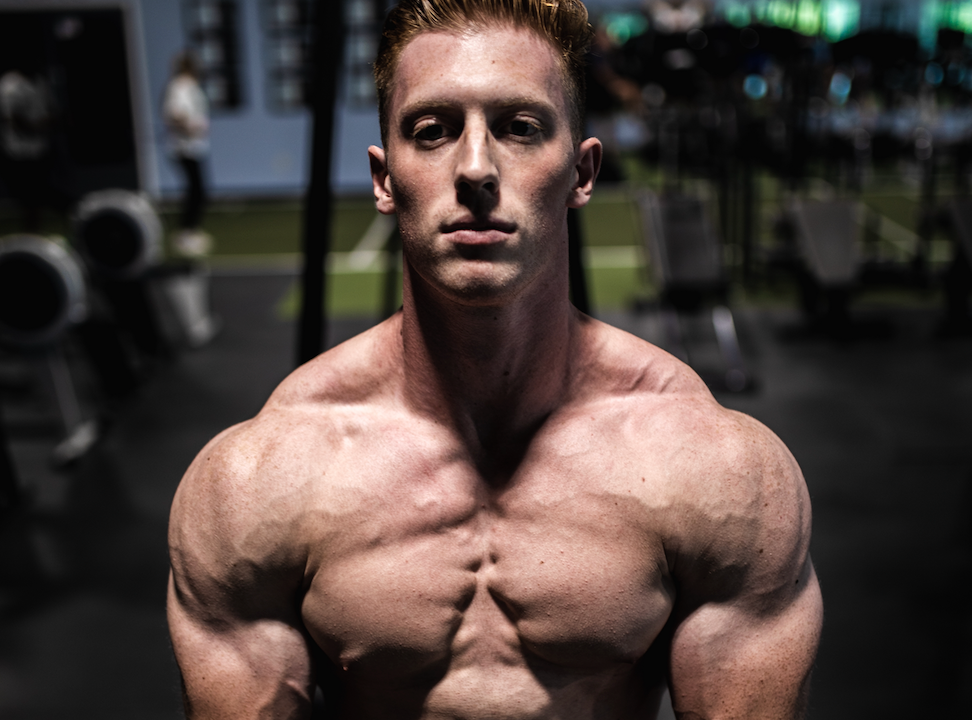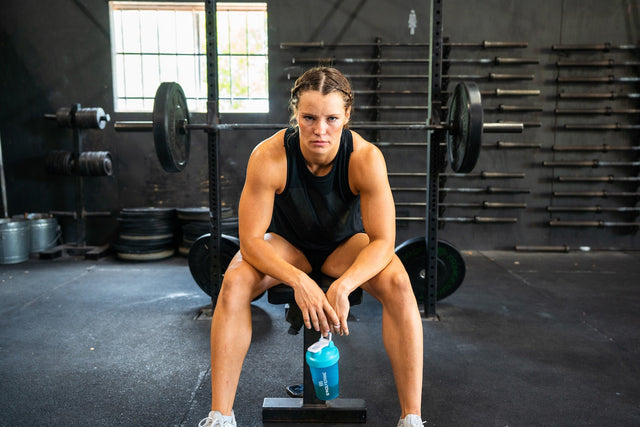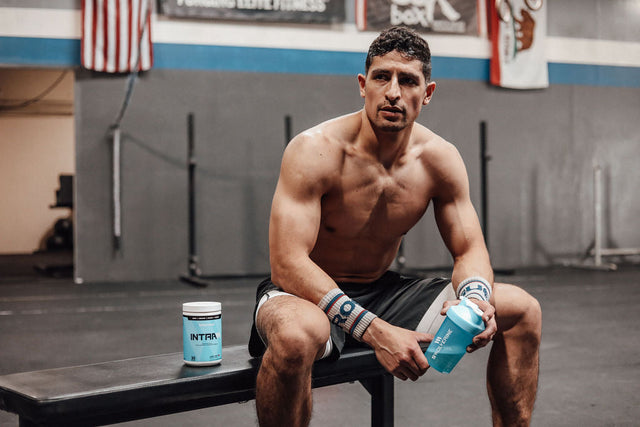Bodybuilders who use anabolic steroids often face a critical challenge after their cycle ends: how to restore natural testosterone production. Without proper recovery, suppressed hormones can lead to muscle loss, fatigue, mood swings, and long-term endocrine disruption. That’s where gonadorelin — a synthetic form of gonadotropin-releasing hormone (GnRH) — enters the conversation.
Originally developed as a diagnostic and therapeutic tool in reproductive medicine, gonadorelin is now being explored by athletes and bodybuilders for its potential role in post-cycle therapy (PCT). By stimulating the pituitary to release LH (luteinizing hormone) and FSH (follicle-stimulating hormone), gonadorelin may help jumpstart the body’s own testosterone production, accelerating recovery after anabolic cycles.
In this guide, we’ll cover:
→ What gonadorelin is and how it works
→ Why bodybuilders use it in PCT
→ Potential benefits for hormonal recovery
→ Risks, side effects, and safety considerations
→ Legal status and whether it’s a viable option
What Is Gonadorelin?
Gonadorelin is a synthetic analog of gonadotropin-releasing hormone (GnRH), a decapeptide naturally secreted by the hypothalamus. Its primary role is to stimulate the pituitary gland to release two key hormones:
→ Luteinizing Hormone (LH): Signals the testes to produce testosterone.
→ Follicle-Stimulating Hormone (FSH): Supports spermatogenesis and overall testicular function.
Clinically, gonadorelin has been used for decades in the diagnosis and treatment of reproductive disorders, such as hypogonadotropic hypogonadism and certain cases of infertility. Unlike hCG, which directly mimics LH, gonadorelin works upstream by triggering the body’s own hormonal cascade — a mechanism that appeals to bodybuilders seeking a “natural restart” of their hypothalamic-pituitary-gonadal (HPG) axis after steroid use.
This makes gonadorelin an attractive candidate for post-cycle therapy (PCT) strategies where the goal is to re-establish normal hormone production after suppression caused by anabolic steroids.
How Gonadorelin Works in Post-Cycle Therapy
When bodybuilders run anabolic steroid cycles, external androgens suppress the hypothalamic-pituitary-gonadal (HPG) axis. This negative feedback loop reduces natural GnRH secretion, leading to suppressed LH and FSH, and ultimately low testosterone production.
Gonadorelin works by mimicking natural GnRH, binding to receptors in the anterior pituitary to stimulate LH and FSH release. This cascade reactivates the testes, encouraging the resumption of natural testosterone synthesis.
Key Mechanistic Points:
→ Upstream stimulation: Unlike hCG, which acts directly on the testes, gonadorelin activates the pituitary, restoring the body’s signaling hierarchy.
→ Supports spermatogenesis: By elevating both LH and FSH, gonadorelin may help preserve or restore fertility alongside testosterone recovery.
→ Pulsatile vs. continuous dosing: Research shows that pulsatile administration mimics natural GnRH rhythms, maintaining pituitary sensitivity. Continuous dosing may lead to receptor desensitization
This mechanism makes gonadorelin particularly interesting for PCT, as it addresses hormonal suppression at the level of the pituitary-hypothalamic axis, potentially providing a more physiological recovery compared to downstream mimetics like hCG.
Zhang, Luyao, et al. "The pulsatile gonadorelin pump induces earlier spermatogenesis than cyclical gonadotropin therapy in congenital hypogonadotropic hypogonadism men." American journal of men's health 13.1 (2019): 1557988318818280.
Benefits of Gonadorelin for Bodybuilders
For athletes and bodybuilders coming off an anabolic steroid cycle, restoring normal hormone balance is crucial. Gonadorelin offers several potential benefits that make it attractive as part of a post-cycle therapy (PCT) protocol.
→ Restoration of Testosterone Production
By stimulating the pituitary to release LH and FSH, gonadorelin helps reactivate the testes, allowing the body to resume endogenous testosterone production. This is essential for maintaining muscle mass and strength gains made during the cycle.
→ Preservation of Muscle and Performance
Without proper recovery, suppressed testosterone can lead to muscle catabolism, fatigue, and reduced training intensity. Gonadorelin’s ability to accelerate hormonal recovery helps minimize the risk of losing hard-earned progress post-cycle.
→ Potential Fertility Benefits
Unlike hCG, which mainly stimulates testosterone production, gonadorelin also supports spermatogenesis through FSH release. For bodybuilders concerned about fertility, this dual action may provide a broader recovery of reproductive health.
→ More Physiological Recovery
Because gonadorelin works upstream of the testes, it restores the natural communication between the hypothalamus, pituitary, and gonads. This may result in a more sustainable recovery compared to direct testicular stimulation agents like hCG.
Leão, Iago MR, et al. "Effect of 200 µg of gonadorelin at the first gonadotropin-releasing hormone of the Resynch-25 on ovarian dynamics and fertility in lactating Holstein cows." Journal of Dairy Science 107.5 (2024): 3319-3334.
Side Effects and Risks of Gonadorelin
While gonadorelin offers promising applications for hormonal recovery, it is not without potential drawbacks. Understanding its safety profile is essential before considering it in a post-cycle therapy setting.
→ Short Half-Life and Dosing Challenges
Gonadorelin has a very short half-life (minutes in circulation), which means its effects are transient. To mimic natural GnRH rhythms, it often requires pulsatile administration using infusion pumps in clinical settings. For bodybuilders, this makes dosing complicated and less practical compared to oral SERMs.
→ Risk of Pituitary Desensitization
If administered continuously rather than in pulses, gonadorelin can cause pituitary receptor desensitization, leading to suppressed LH and FSH instead of stimulation. This is the opposite of what’s desired in PCT.
→ CNS and Local Side Effects
Reported adverse effects in clinical use include:
→ Headaches
→ Dizziness
→ Flushing
→ Local irritation at injection site
→ Limited Human Data in PCT Context
Most research on gonadorelin has been conducted in fertility or diagnostic medicine, not bodybuilding. While its mechanism supports its use for hormonal recovery, there is limited direct evidence for its effectiveness in post-steroid cycles.
→ Comparison to Other PCT Agents
→ hCG: Easier to administer, but acts directly on the testes and does not restore full HPG axis signaling.
→ SERMs (Clomid, Nolvadex): Oral and well-studied in PCT, though they act downstream by blocking estrogen feedback.
→ Gonadorelin: Restores more physiological signaling, but dosing logistics and short half-life limit its practicality.
Picard-Hagen, Nicole, et al. "Effect of gonadorelin, lecirelin, and buserelin on LH surge, ovulation, and progesterone in cattle." Theriogenology 84.2 (2015): 177-183.
Gonadorelin vs. Other Peptides in PCT
Bodybuilders often experiment with different peptides and compounds for post-cycle recovery. While gonadorelin targets the HPG axis directly, its role and practicality differ from other recovery-focused peptides.
→ Gonadorelin vs. hCG
-
hCG (Human Chorionic Gonadotropin) mimics LH directly, stimulating testosterone production at the testes.
-
Gonadorelin works higher up, stimulating the pituitary to release LH and FSH naturally.
-
hCG is easier to administer and widely studied in PCT, but long-term use without upstream signaling may suppress the HPG axis further.
→ Gonadorelin vs. Kisspeptin
-
Kisspeptin is another upstream regulator that stimulates natural GnRH release.
-
While promising in fertility research, kisspeptin peptides are not yet well-studied for PCT.
-
Gonadorelin bypasses kisspeptin and directly activates pituitary GnRH receptors, making it more direct but harder to dose due to its short half-life.
→ Gonadorelin vs. BPC-157/TB-500
-
BPC-157 and TB-500 are healing peptides that aid tissue repair but do not influence testosterone or fertility.
-
These can complement PCT by supporting joint, tendon, or recovery needs but do not address hormonal suppression.
→ Gonadorelin vs. SERMs (Clomid, Nolvadex)
-
While not peptides, SERMs remain the gold standard for PCT.
-
Gonadorelin offers a more “physiological” restart but is impractical compared to SERMs’ oral convenience and proven efficacy.
Gianturco, Stephanie L., et al. "Gonadorelin acetate Summary Report." (2021).
Stacking and Cycling Gonadorelin in PCT
Since gonadorelin is rarely used in isolation for PCT, it is often considered in stacked protocols with more practical agents.
→ Gonadorelin + SERMs
Stacking gonadorelin with Clomid (clomiphene) or Nolvadex (tamoxifen) may provide the best of both worlds:
→ Gonadorelin stimulates the pituitary to restore signaling.
→ SERMs block estrogen’s negative feedback, amplifying LH and FSH release.
→ Gonadorelin + hCG
A less common strategy involves using hCG to stimulate testosterone directly while employing gonadorelin to “train” the pituitary. However, this combination is redundant in many cases and adds complexity.
→ Cycle Length & Dosing Considerations
-
Pulsatile administration (e.g., microdoses every few hours) is ideal for mimicking natural GnRH signaling, but impractical without a medical infusion pump.
-
Short-term protocols (2–4 weeks) are theorized to help “kickstart” the HPG axis after suppression.
-
Most bodybuilders opt for SERMs over gonadorelin due to cost, availability, and practicality, reserving gonadorelin for experimental or medically supervised protocols.
Post-Cycle Therapy (PCT) with Gonadorelin
When bodybuilders finish an anabolic steroid cycle, their natural testosterone production is often suppressed due to negative feedback on the hypothalamic-pituitary-gonadal (HPG) axis. Without proper PCT, this can lead to low testosterone symptoms: loss of muscle mass, decreased libido, fatigue, and mood changes.
Gonadorelin has been explored as a PCT tool because it directly stimulates the pituitary to release LH and FSH, jumpstarting the body’s own testosterone production. However, due to its short half-life and dosing complexity, it is rarely used alone. Instead, it may be combined with more practical agents such as SERMs (Clomid or Nolvadex) and lifestyle/supplement strategies to optimize recovery.
→ Gonadorelin in PCT Protocols
→ Acts upstream, restoring pituitary function and natural testosterone signaling.
→ May be stacked with SERMs to block estrogen’s negative feedback, amplifying LH/FSH release.
→ More physiological than hCG, but less convenient due to need for pulsatile dosing.
→ Supporting PCT with Supplements
In addition to pharmacological agents, bodybuilders can benefit from targeted supplementation to support hormonal balance, recovery, and sleep during PCT. Two key options are:
-
ZMT: A natural testosterone support formula containing magnesium, zinc, ashwagandha, L-theanine, GABA, melatonin, and rhodiola. These ingredients help optimize sleep, reduce cortisol, and support natural testosterone levels — critical during the recovery phase.
-
DHEA: Supplementing with 100 mg per day of DHEA can provide hormonal support by serving as a precursor for both testosterone and estrogen synthesis, aiding in restoring balance while the HPG axis restarts.
→ Practical Integration
A comprehensive PCT might look like:
→ SERMs (Clomid/Nolvadex) for 4–6 weeks to block estrogen feedback.
→ Gonadorelin (pulsatile) in early recovery to re-stimulate LH/FSH if medically supervised.
→ ZMT™ (6 capsules nightly) to improve sleep quality, stress resilience, and natural testosterone support.
→ DHEA (100 mg daily) to provide a hormonal foundation while endogenous production ramps back up.
This combination addresses the entire recovery process: restarting the axis, managing estrogen, supporting sleep and stress, and giving the body the raw hormonal substrates it needs.
Legal Status & Availability
→ United States
Gonadorelin is FDA-approved but only for specific diagnostic and therapeutic uses in reproductive medicine. It is not approved for bodybuilding, post-cycle therapy, or performance enhancement. Any off-label use for PCT is considered experimental and carries legal and medical risks.
→ International
Some countries allow limited clinical use of gonadorelin in fertility clinics, but it is not legally marketed for sports or bodybuilding applications. Like in the U.S., sourcing it through “research peptide” vendors falls into a gray market with uncertain purity and safety.
→ Availability
-
Medical-grade gonadorelin is administered in controlled clinical settings, often through pulsatile infusion pumps.
-
Peptide suppliers may sell gonadorelin labeled “for research purposes only,” but these products are unregulated, and their quality is not guaranteed.
Conclusion: Gonadorelin’s Place in Post-Cycle Therapy
Gonadorelin is a unique peptide that directly addresses HPG axis suppression by stimulating the pituitary to release LH and FSH. For bodybuilders, this mechanism makes it theoretically valuable for post-cycle therapy, as it promotes a more natural restart compared to downstream agents like hCG.
Key takeaways:
→ Gonadorelin restores hormonal communication upstream, reactivating testosterone and spermatogenesis.
→ Its benefits include preserving muscle, supporting fertility, and accelerating recovery after anabolic cycles.
→ Side effects and challenges include its short half-life, dosing complexity, and risk of receptor desensitization if not administered properly.
→ Compared to other peptides, gonadorelin is more physiologically aligned with natural recovery, but less practical than SERMs or hCG in real-world bodybuilding contexts.
→ It remains legally restricted to medical use, with no approval for PCT or performance enhancement.
Until more research is available, gonadorelin should be viewed as an experimental tool, not a mainstream solution. For most bodybuilders, tried-and-true PCT strategies — including SERMs and proper recovery nutrition/supplementation — remain the more practical route.
⚠️ Disclaimer: This content is for educational purposes only and is not medical advice. Gonadorelin is not FDA-approved for bodybuilding or PCT. Always consult a qualified healthcare professional before starting, stopping, or combining any supplement, medication, or hormone-related therapy.


